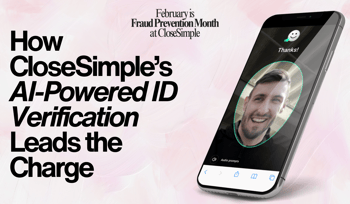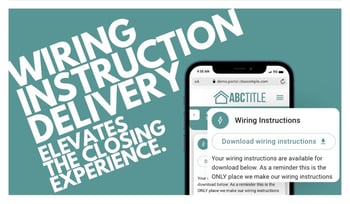When Too Many Links Lead to Trouble: How Consumer Confusion is Opening the Door to Fraud in Title & Escrow

You’ve probably heard the horror stories by now.
A buyer wires their entire life savings to a fraudulent account, thinking it’s going to their title company. A seller receives last-minute “updated wiring instructions” from someone pretending to be their escrow officer. A realtor’s email is spoofed, leading a client to click a link that installs malware.
Fraud in real estate isn’t slowing down. It’s getting smarter.
And part of the reason? Confusion.
How the Closing Process is Making Fraud Easier
The closing process has always been a little complicated—but with modern tech, it’s becoming a digital maze. Today’s buyer might receive communication from:
- A title company’s core software
- A digital ID verification vendor
- A separate platform to schedule the closing
- A wire fraud prevention tool
- An eSigning tool
- An email with a “secure link” to review documents
Every one of those tools might come from a different third-party vendor, using different branding, layouts, and URLs.
Now imagine you’re the buyer. You’ve clicked four or five different links—all supposedly from your title company—and now another email comes in with new wiring instructions.
Would you pause to question it? Or would you assume it’s part of the process?
This is exactly how email spoofing and wire fraud happen.
Scammers Count on Confusion
Real estate fraudsters use tactics like:
- Email spoofing: Creating fake emails that appear to come from your agent or title company.
- Last-minute wiring changes: Urging consumers to send money to a different account—fast.
- Fake urgency: Applying pressure to skip steps and act quickly.
- Third-party impersonation: Mimicking platforms that consumers have already interacted with.
Every unfamiliar logo, every different domain name, and every new set of instructions creates another crack for fraud to slip through.
At CloseSimple however, we believe the closing process should be simple, secure, and familiar. That’s why we’ve built a unified, white-labeled portal experience that reduces fraud risk by reducing confusion.
With CloseSimple:
- Consumers only log into one place: No more bouncing between different vendors.
- Everything is branded with the title company’s identity: Reinforcing trust and reducing spoofing risk.
- Milestone-based communication keeps everyone on track: So there’s no confusion about what’s done or what’s next.
- Lenders, realtors, and consumers collaborate in one shared space: Limiting the need for outside tools and extra logins.
Instead of six different emails and platforms, CloseSimple keeps the experience focused, secure, and transparent.

Does This Really Stop Fraud?
You might ask, “But will one platform really stop scammers?”
The truth? No system is completely foolproof.
But here’s what we know: fraud thrives in chaos. The more disjointed the experience, the easier it is for fraudsters to insert themselves unnoticed. The more consistent, branded, and streamlined your process is, the harder it is for scammers to succeed.
CloseSimple doesn’t just simplify the process—it makes it more secure by creating clarity. When consumers know exactly what to expect—and what it should look like—they’re much more likely to question anything that feels off.
Let’s Make Closing Smarter, Safer, and Simpler
The closing process doesn’t need more vendors, more logins, or more complexity.
It needs clarity. It needs consistency. It needs a quarterback.
And that’s what CloseSimple is built to be—a real estate transaction management software that brings the consumer, realtor, lender, and title team into one smart, secure space.
Because when we eliminate confusion, we eliminate risk.
The future of closing isn’t just faster. It’s safer.
Let’s build it together.
bogid - 27787114388
Related posts

Article
Crush Fraud, Not Hearts: Elevate Security with CloseSimple’s Wiring Instruction Management

Article
Crush Fraud, Not Hearts: How CloseSimple’s Secure Portal Redefines Fraud Prevention

The CloseSimple Portal
[Product Release] Wiring Instruction Delivery

Article
Crush Fraud, Not Hearts: How CloseSimple’s AI-Powered ID Verification Leads the Charge